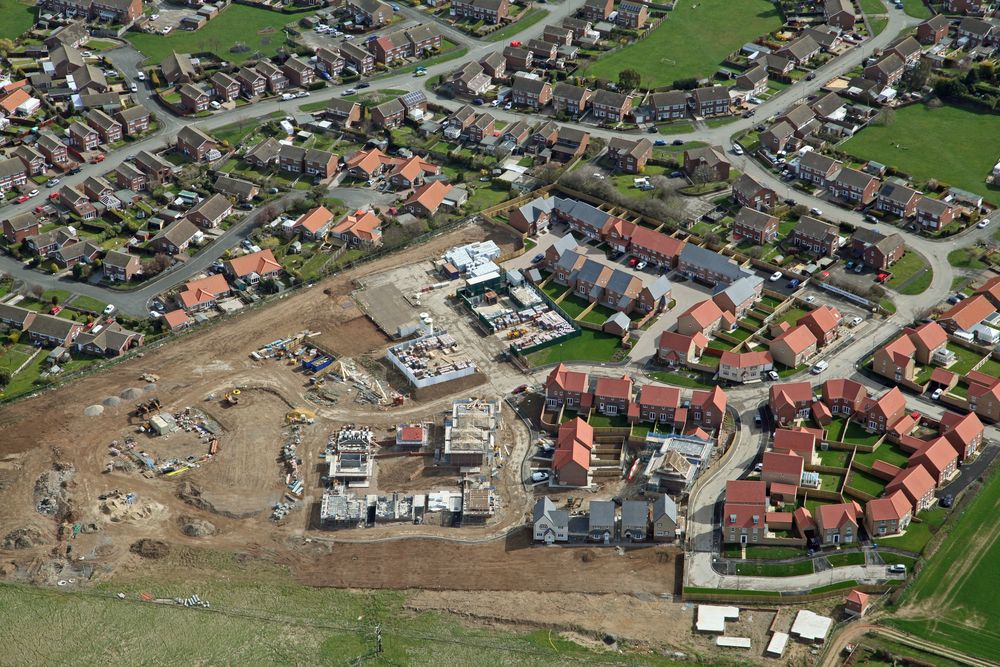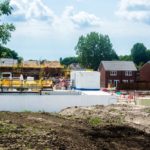Sector - Public Sector
Infrastructure needed to achieve one million homes target

Infrastructure, while essential for jobs, economic growth and productivity, is a complex issue. ‘Investment in core infrastructure’ has become a stock phrase for our politicians. It’s a convenient mantra, giving the impression this important consideration is at the very top of the agenda. But, according to Chris Stanley, Housing Manager of Modern Masonry and The Concrete Block Association, it’s become hollow and vague; results can’t be measured against it.
Indeed, he says, many are concerned about the government’s ability to deliver major projects on time and at cost, Crossrail being a good example. But infrastructure investment is key in enabling housing development.
Earlier this year, infrastructure growth was forecast to rise by 8.8% over the course of this year and by 7.7% in 2020, of which a significant proportion will need to be delivered by public sector.
As Chancellor Philip Hammond said in November 2017, everyone in the housebuilding sector would have to work together to achieve his proposed housing targets. Fast forward and James Brokenshire recently echoed this, stressing the importance of working smarter and having more ‘vision’ with big infrastructure investments. The industry and Whitehall both need to be more ‘joined-up’, and yet both have failed to give us an idea of what that vision looks like.
Now with the prospect of a new PM in a few weeks’ time we may well have a perspective. I’d like them to consider the following:
The problems of the past
Although the housebuilding industry has largely recovered since the financial crisis of 2008, weak and outdated infrastructure has been a significant barrier to delivering targets in the past. Where utilities are not provided at the right time or at reasonable costs, housebuilding slows down. Water and sewerage are especially problematic, roads and environmental considerations major constraints.
It stands to reason that projects delayed for many months significantly add to costs. As the Housing & Finance Institute’s (HFI) research shows, part of the problem falls on local authority and national government’s efforts to resolve the challenges by focussing on larger developments, to the detriment of smaller sites. However, the HFI’s pilot project further uncovered a willingness on the part of infrastructure providers to engage with, and respond to, these shortcomings providing improved services in the future.
The complexity
To create new homes, existing infrastructure must be in place, including utility services, transport routes, schools and healthcare. New developments also require the construction of new infrastructure, such as laying new roads or establishing public transport links. The influx of new people into an area will add demand, and it becomes necessary to assess whether existing services and utility capacity can support it.
In terms of energy infrastructure, we need to future-proof our homes. While low-carbon technologies have taken huge leaps in recent years, it is still the most environmentally sound practice to build homes with a high thermal mass, requiring as little energy for heating and cooling as possible.
Indeed, this emphasises that the current excitement around modern methods of construction is misguided. As the Environment Audit Commission’s report last July showed, modular homes are prone to overheating due to being lightweight. They lack the efficiency of homes constructed using traditional brick and block, which make for comfortable temperatures all year round.
As well as the ‘hard’ infrastructure, social infrastructure hugely influences whether or not an area is liveable. Access to schools, doctor’s surgeries, shops and open public spaces such as parks combine to make an area attractive to a community.
The planning system offers some provision for social infrastructure, but we largely rely on the market to deliver this. Developers should consider the possibilities of what this kind of investment could achieve. We’ve seen how areas becoming more popular lead to further development.
How do we solve a problem like infrastructure?
To deliver infrastructure fit for the 21st century, detail required is too intricate for central government and too important to rely on private operators alone. One part of the answer is to re-empower our local authorities. In the last nine years, council funding has fallen; this needs to be reversed.
The challenges a development faces are location-specific. Expensive historical upgrading of sewage works may be required in one area. In another the core utilities may be excellent, but there are no education facilities. Correct distribution of infrastructure contributions is what creates a strong and sustainable community.
To accelerate the delivery of housing, our industry operators need a more collaborative approach, but our materials manufacturers are more than ready to answer an increase in demand. With a robust manufacturing pipeline, the brick, block and mortar sectors have capacity to absorb the increase in housing starts.
As a sector we’re also relatively safe from the effects of Brexit, as almost all constituent materials we use are locally sourced. We need more investment in training for on-site construction, yet upskilling our workforce is still more cost-effective than the creation of a whole new ‘manu-construction’ workforce for the off-site sector.
Times are tough but we are a strong industry, and ultimately we need to provide certainty in an era of uncertainty. What we need is a more open, joined-up dialogue between industry stakeholders to deliver the proposed levels of new housing stock.
If you would like to read more articles like this then please click here.
Related Articles
More Public Sector News
- Planning application submitted for major new government hub in Darlington
11 Apr 24
The Government Property Agency (GPA) has submitted a planning application to Darlington Borough Council to
- Fund delivers place changing regeneration across England
4 Mar 24
The ECF (formerly the English Cities Fund) has doubled in size to £400M, building on
- UK construction costs set to rise by up to 3.8% in 2024
29 Feb 24
Construction costs in the UK are predicted to rise by 3 – 3.8% this year,






